Harmony of smile design in the facial context
Abstract
Objective: The aim of this study was to create mathematical modeling to generate statistical models that reliably and quickly identify facial type while smiling. This analysis enables the creation of a digital design for the prosthetic restoration of the anterior teeth.
Materials and methods: The study involved the computer analysis of 91 facial images. Through mathematical modeling, digital facial maps were generated consisting of 27 landmark points and 12 basic lines determining the facial type. Four main facial types
were defined for the purposes of this study: strong, dynamic, delicate, and calm. Selected data were recorded in a database and analyzed using IBM SPSS Modeler software.
Results: A varying number of combinations characterize the face; 61.5% of people have the features of two facial types, and 38.5% of three facial types. The overall analysis of the data for both genders shows the most accurate model for predicting facial type by digital facial map is the created algorithm C5.1 (classification tree), with a general prediction accuracy of 84.3%.
Conclusion: Dental Anatomical Combinations with Rebel Simplicity systems is a constructive way to ensure harmonious unity between the teeth and the facial type. Digital facial maps provide reliable and fast identification of the facial type while smiling. This analysis enables the creation of a digital design for the prosthetic restoration of the anterior teeth.
(Int J Esthet Dent 2020;15:2–16)
Clinical Research
Introduction
Computer technology is becoming increasingly widely used for the esthetic prosthetic dental treatment of patients. A number of studies demonstrate the effectiveness of computer visualization for clarifying patient preferences and for achieving a predictable and satisfactory prosthetic treatment outcome.1-3
Excellent-quality dental software is available on the market. A common feature of all smile design software systems is the assessment of the smile in the overall facial context. Therefore, all smile design concepts and systems require a facial photograph of the patient smiling naturally.3
The relationship between how people define themselves, the first impression they make on others, and their facial characteristics has implications for how people interact socially in the modern world.4 The expression on a person’s face creates the first impression with others and has a high social value.5,6
The aim of this study was to create mathematical modeling to generate statistical models that reliably and quickly identify a person’s facial type while smiling. Such an analysis then enables the creation of a digital design for the prosthetic restoration of the anterior teeth.
Materials and method
This study analyzes the facial characteristics that play an essential role in making the first impression on others. By mathematical modeling, statistical models are generated by which we determine the facial type defined by perception, impression, and beauty rather than by facial symmetry or anthropology. For the purposes of this study, four main facial types were defined.
The study included a computer analysis of 91 full-face smile photographs of 42 male and 49 female subjects aged between 18 and 30 years. The subjects’ faces were categorized into four main types by their facial characteristics and the first impression they make on others, as follows:
■ Strong: rectangular face formed by well-defined angles, vertical and horizontal lines around the forehead and mouth, and sunken eyes.
■ Dynamic: angular face formed by slanting lines around the eyes and forehead, prominent nose, and a wide mouth.
■ Delicate: oval face with rounded forms or formed by thin lines and close-set eyes.
■ Calm: round or square face, pronounced lower lip, and prominent eyelids.
After calibration, the 91 images were visually assessed according to defined criteria, and the established results were entered into a standardized table by four independent researchers. After determining the facial type by the method of visual perception, a digital facial card was generated for each particular facial image (Fig 1). The card consisted of 27 landmark facial points determined by a computer-assisted image recognition module (Table 1). The landmark points represent soft tissue markers that can be visually detected in a cephaloscopic analysis of a fullsmile facial photograph. The points determine basic facial lines or baselines, which in turn determine the shapes that build the facial card. The data analyzed by gender were 27 facial points and 12 basic facial lines. Using the processed data from the individual photographs, mathematical models were constructed to define each of the facial types. Using a mathematical algorithm, average digital facial maps were created corresponding to each facial type (strong, dynamic, delicate, calm) (Fig 2).
Results
When analyzing the data for each item separately, it was found that for most subjects the combined elements belong to different facial types. For example, a strong facial contour could be seen in a total of 9.3% (± 12.2) of the subjects: 10.1% (± 12.4) for males and 8.7% (± 12.0) for females, respectively. A strong eye type could be seen in a total of 6.6% (± 11.1) of the subjects: 7.7% (± 11.7) for males and 6.5% (± 10.5) for females, respectively. To conclude, 2.7% of the subjects with a strong facial contour had an eye type that belongs to a facial type other than strong. A strong nose/eyebrow type could be seen in a total of 8.2% (± 11.8) of the subjects: 10.7% (± 12.5) for males and 6.1% (± 10.09) for females, respectively. Therefore, 1.1% of the subjects with a strong facial contour (9.3%) had a nose/eyebrow type other than strong. Most large variations were seen in the mouth type. A strong mouth type could be seen in 5.2% (± 10.2) of the subjects: 6.6% (± 11.1) for males and 4.1% (± 9.3) for females, respectively. Therefore, 4.1% of the subjects with strong facial contours (9.3%) had a mouth type other than strong.
Bearing in mind that each of the tested elements contributes to the whole facial impression and classification of facial type, after a detailed mathematical analysis of the data it was found that the facial type is defined as a combination of characteristics of several types, with varying degrees of dominance of one type over the other. The conclusion arrived at was that a varying number of combinations are important in characterizing the face, and a high percentage of the subjects (61.5%) were characterized by two types of features: 64.3% for males and 59.2% for females, respectively.
Of the faces analyzed, 38.5% had three types of features: 35.7% for males and 40.8% for females, respectively. For each face, one facial type predominated in terms of the overall impression, while the second and third facial types were complementary and harmonizing.
According to the results of the mathematical analysis for both males and females conducted using the IBM SPSS Modeler software, it was found that the segments defining the chin are less important when determining facial geometry.
Each facial type is formed by a combination of facial features and their relationship to one another. An algorithm was used to describe the proportions for the facial types according to a machine learning analysis (Table 2); the data in this table represent a simplified generalization of the more complex model calculated by the software. All distances are calibrated relative to the distance between the pupils of the eyes.
The above findings regarding the relative importance of the facial features enabled a revision of the initial hypothesis, which stated that all features have equal importance. While all the facial points have a role in determining the facial type, their importance in determining the geometry is different and depends on the segments they form.
When analyzing the data by gender, seven character segments were defined for males – four of these coincided with the identified segments in the overall analysis, and three were different and refer to the width of the mandibular jaw angle and the width of the temple. Eight character segments were defined for females – five of these coincided with the identified segments in the overall analysis, and three were different and refer to the width of the mandibular joint and the width of the chin.
The overall analysis of the data for the two genders shows that the most accurate model for predicting the facial type by the digital facial map is made using an algorithm C5.1 (classification tree). The accuracy of the general prediction model that was created was 84.3%. It is possible to include classification by gender to further increase the accuracy of the analysis. The created algorithm compares each feature with the reference elements and calculates which shape fits best. It classifies the whole face by using the results for all the features.
Discussion
Digital technology is widely used today for facial recognition through face detection from photographs and the analysis of facial contours.7-10 Some biologically significant elements of facial photographs and their geometry can be used for facial recognition. Most studies take into account the facial analysis, facial contours, eyebrows, eyes, nose, and mouth.11 Nowadays, the availability of information and ever-developing technology in the field of esthetic dentistry have led to increased patient demand, which, in turn, has prompted dental professionals to question certain aspects of customization. Use is being made of a new tooth form classification system called Dental Anatomical Combinations. This concept aims to help dental professionals to produce different tooth anatomies that extend beyond the standard tooth shapes.12
When combined with traditional treatment planning methods, digital tools can offer a more conservative approach and a more predictable outcome.13 The merging of two-dimensional (2D) designs and three-dimensional (3D) digital models allows for prosthetic constructions to be completed digitally, and scanned models can then be transferred to the final design of the restoration.14 Detailed functional analysis of the dentition using provisional restorations to change or adapt the smile design is also needed.15 The success of an esthetic treatment relies on good planning and screening of patients, which is true for veneer cases, crown lengthening procedures or implant treatments. Optimal esthetic results require a suitable smile design that fulfils the patient’s expectations (Fig 3).16
For the present study, the prep design was obtained from Rebel Simplicity (Visagismile). Individual restorations were then designed by copying the prep design. The advantage of this technique is that the benefits of digital design are combined with technicians’ conventional knowledge, expertise, and skills.
After the facial photograph has been taken, it is automatically calibrated and processed by Rebel Simplicity, which provides Fig 4 Computer-assisted image recognition module using a mathematical algorithm created by the authors to classify the face according to each facial type (strong, dynamic, delicate, and calm). Fig 5 Artificial intelligence (AI) relates the patient’s facial perception to the smile design by applying algorithms for computing the optimal combination of the incisal silhouette, tooth axes, and dominance of the centrals. the option of automatically recognizing the patient’s facial map. Artificial intelligence (AI) relates the patient’s facial perception and personality to the smile design by applying algorithms for computing the optimal combination of the incisal silhouette, tooth axis, dominance of the centrals, and combination of individual tooth shapes out of thousands of possibilities (Figs 4 to 6).
The 2D design is automatically converted into a 3D digital wax-up of a compete Rebel Simplicity design (Fig 7).
Fast and inexpensive, the new 3D smile design is sent back within minutes to the clinician/technician in the form of an .stl file. After receiving the file, the clinician/technician can print the data in 3D and immediately have the true 3D design of the new smile.
The clinician then continues to work with a 3D digital printed model in hand and creates a silicone impression of the wax-up, which is applied in the patient’s mouth. The clinician then preps the teeth (or not) according to this design. After that, the impression is sent to the technician to create the final porcelain veneers or crowns (Fig 8).
Based on the anatomical concepts and facial details, Dental Anatomical Combinations (see above) was used as a technical approach in the laboratory. The basic principle of this system is the segmentation and recombination of two or even all three of the basic tooth forms (Fig 9). To create the final tooth form, the full or half segments are recombined, creating complementary classes. The first complementary class (1:3) uses one full segment of each of the three principal tooth forms, resulting in six different shape combinations. The second complementary class (1:2) uses one full segment combined with two [2] principal tooth forms, resulting in 18 different tooth shapes. The third (1/2:3) and fourth (1/2:2) complementary classes involve half [1/2] segments combined with three [3] or two [2] principal tooth shapes, respectively (Fig 10).
By dividing the tooth vertically or obliquely into two parts, the segments are always in contrast with the final shape, giving the tooth a more dynamic appearance.
Having all the information in the clinician’s office is useful for this approach to customized smile makeovers. The no prep veneers were created working on an alveolar model that allows the technician to condition the soft tissue on a hard material such as a stone cast. Soft tissue modifications made on a hard material will assure a good result in the mouth once the rehabilitation is placed (Figs 11 and 12).
Veneers were made using a layering feldspathic ceramic technique (Figs 13 to 15). Due to the shade A1 plus value, the technician worked according to the stratified technique (Fig 16). Once the veneers were ready, they were removed from the refractory to the master die in the stone cast. This step was realized using a microscope to assure precision and a better fit. After fitting the margins, the veneers were accurately polished with a rubber wheel using magnification, and finally manual surface polishing was performed with a pumice (Fig 17). The contact point was adjusted on the solid cast.
The technique described in this case report is new and smart. The precise link between the 2D project related to the facial type and personality of the patient and the 3D Rebel Simplicity project, the mock-up, and the final ceramics is groundbreaking. Today, with this technology, it is possible to simulate a completely personalized smile in 5 min. Patients are not only guaranteed that what they see is what they get, but also that it will be delivered with a high level of precision regarding esthetics and facial integration. This is very significant from a technical point of view as it reduces the number of esthetic adjustments that need to be made
as well as the esthetic complaints from patients after bonding (Figs 18 to 22).
Conclusion
The main purpose of esthetic dental treatment is achieving a beautiful smile. One of the most significant challenges for the clinician is to recreate the beauty of the smile with natural looking teeth. There are different points of view concerning esthetic parameters. Dental Anatomical Combinations in combination with Rebel Simplicity systems is a constructive way to ensure harmonious unity between the teeth and the facial type. Digital facial maps provide reliable and fast identification of the facial type while smiling. This analysis enables the creation of a digital design for a precise and esthetic prosthetic restoration of the anterior teeth.
References
1. McCrae R, Costa P. A contemplated revision of the NEO Five-Factor Inventory. Personality and Individual Differences 2004;36:587–596.
2. McLaren EA, Culp L. Smile analysis: the Photoshop smile design technique: Part I. J Cosmet Dent 2013;29:94–108.
3. Zimmermann M, Mehl A. Virtual smile design systems: a current review. Int J Comput Dent 2015;18:303–317.
4. Wolffhechel K, Fagertun J, Jacobsen UP. Interpretation of appearance: the effect of facial features on first impressions and personality. PLoS One 2014;9:e107721.
5. Davis LG, Ashworth PD, Spriggs LS. Psychological effects of aesthetic dental treatment. J Dent 1998;26:547–554.
6. Rhodes G. The evolutionary psychology of facial beauty. Annu Rev Psychol 2006;57:199 226.
7. Gizatdinova Y, Surakka V. Automatic localization of facial landmarks from expressive images of high complexity. Department of Computer Sciences, FIN-33014, University of Tampere, 2008.
8. Gupta S, Markey MK, Bovik AC. Anthropometric 3D face recognition. Int J Comput Vis 2010. doi: 10.1007/s11263-010-0360.
9. Ibrahimagić-Šeper L, Celebić A, Petricevic N, Selimović E. Anthropometric differences between males and females in face dimensions and dimensions of central maxillary incisors. Medicinski glasnik 2006;3:58–62.
10. Yankov B, Iliev G, Filchev D, et al. Software Application for Smile Design Automation Using the Visagism Theory. Proceedings of the 17th International Conference on Computer Systems and Technologies, CompSysTech’ 16, June 23–24, Palermo, Italy. ACM International Conference Proceeding Series, vol 1164. New York: ACM Inc, 2016:237–244.
11. Shi J, Samal A, Marx D. How effective are landmarks and their geometry for face recognition? Computer Vision and Image Understanding 2006;102:117–133.
12. Phark JH, Romeo G. Dental anatomical combinations: A guide to ultimate dental esthetics. Quintessence Dent Technol 2013;36:183–204.
13. Romeo G. Multilayer ceramic layering: systematic approach technique for the ceramic build up between the facial and lingual area. Smile Dent J 2017;12:10–16.
14. Gürel G, Paolluci B, Iliev G, et al. The Art and Creation of a Personalized Smile: Visual Identity of a Smile (VIS). Quintessence Dent Technol 2019,42:31–48.
15. Gürel G, Bichacho N. Permanent diagnostic provisional restorations for predictable results when redesigning the smile. Pract Proced Aesthet Dent 2006;18: 281–286.
16. Paolucci B, Calamita M, Coachman C, Gürel G, Shayder A, Hallawell . Visagism: The Art of Dental Composition. Quintessence Dent Technol 2012;35:187–200.
Dear customers! We would like to remind you that from 31 December to 3 January sales will be suspended due to the New Year holidays. Please place your orders in advance to avoid possible delays. We wish you a Happy New Year!
Close
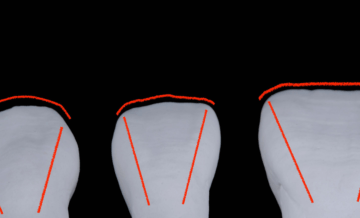
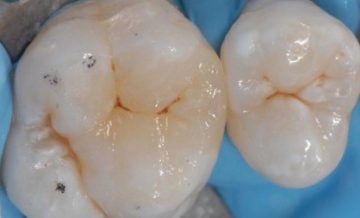
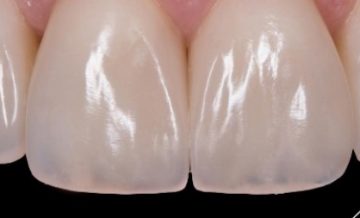
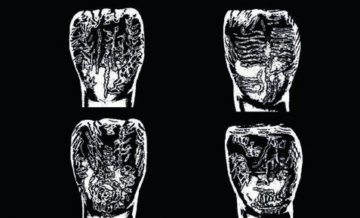
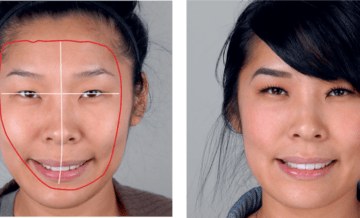





Комментарии могут оставлять только зарегистрированные пользователи.
Регистрация